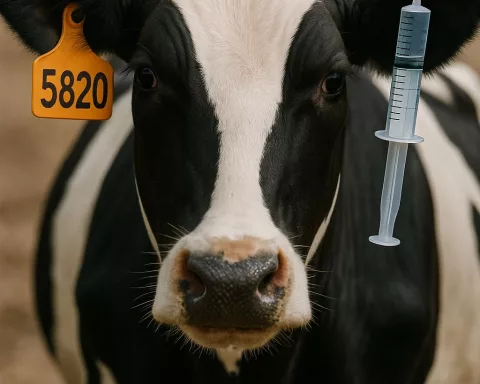Diphtheria has taken hold of Pollsmoor Correctional Facility, but the Department of Correctional Services (DCS) is taking proactive measures to combat the disease. Contact tracing, vaccinations, and education on preventive methods are being employed, and the DCS emphasizes the importance of individual accountability in adhering to infection prevention measures. The collective effort of the DCS and the Department of Health is making sure that Diphtheria does not continue to spread within the facility and beyond. Their response showcases resilience, collective action, and hope for a healthier and safer future.
What is the current situation with Diphtheria in Pollsmoor Correctional Facility?
Diphtheria has infiltrated Pollsmoor Correctional Facility, leading to a public health emergency. The Department of Correctional Services (DCS) has taken proactive measures to curtail the disease, including contact tracing, vaccinations, and education on preventive methods. The DCS continues to closely observe the situation and emphasizes the crucial role of individual accountability in adhering to infection prevention measures. The collective endeavor of DCS and the Department of Health is making sure Diphtheria does not conquer the territory.
The Unseen Enemy Within
Within the vast confines of Pollsmoor Correctional Facility, a covert enemy has taken root. The serious bacterial affliction known as Diphtheria has infiltrated these formidable walls. The Department of Correctional Services (DCS) is entrusted with the mission to tackle this public health emergency, employing forward-thinking initiatives and an unwavering dedication to the wellness of prisoners, staff, and the encompassing community.
The battle against Diphtheria commenced when a 19-year-old male inmate fell sick. Desite the efforts of the Correctional Services Health Care officials, who promptly administered treatment and transferred him to an external medical facility, the inmate’s health worsened. His diagnosis took place at Victoria Hospital and, heartbreakingly, he succumbed to the ailment at Groote Schuur Hospital a few days subsequent.
However, the DCS remained resolute in the face of this severe situation, taking immediate action. An essential initiative was the Contact Tracing exercise, a process aiming to identify those who had contact with the infected inmate. Alongside the Department of Health, 54 Remand Detainees were pinpointed as having exposure to the initial case. These detainees underwent isolation, evaluation, and testing. Although eight tested positive, a ray of hope shone through – 46 detainees and 15 Correctional Services officials, identified as contacts, tested negative for the disease.
A Proactive Approach to Disease Management
Given the pressing nature of the situation, the DCS instigated several crucial procedures to curtail the disease. These procedures encompassed not only medical aspects but also educational ones, focusing on preventive methods to hinder disease propagation. With this focus, a vaccination campaign was launched by the DCS, providing the Diphtheria vaccine to inmates and officials. This, alongside an intensified effort to promote hygiene practices among inmates and staff, showcases the DCS’s ambition to foster a safe and healthy environment.
The thorough approach of the DCS was further highlighted by deep cleaning of facilities, pest control, and the isolation of individuals considered at high risk. Routine health checks have also been implemented aiming to identify potential cases at an early stage and prevent the disease’s further dissemination.
The situation has witnessed considerable stability, as no new cases have been reported in the past five days. Despite being a formidable adversary, Diphtheria is a disease that vaccination can prevent. Through the procedures put in place by the DCS and other stakeholders, the risk of transmission within Pollsmoor Correctional facility is being substantially mitigated.
Beyond the Confinement of the Facility
Such endeavors exceed the physical boundaries of the correctional facility, signaling a wider commitment to public health and safety. Knowledge about Diphtheria’s symptoms, the significance of vaccination, and preventive techniques is being broadly circulated. Health education efforts are being escalated to reach inmates, DCS officials, and service providers.
In the ongoing struggle against Diphtheria, the DCS’s healthcare unit remains alert, closely observing the situation. They emphasize the crucial role of individual accountability in adhering to infection prevention measures. The collective endeavor of DCS and the Department of Health is apparent in the comprehensive response strategy. They have ensured streamlined access to vaccination resources and necessary expertise, signifying a reinforced barrier against the bacterial incursion.
The unfolding story at Pollsmoor Correctional Facility is a testament to the effectiveness of proactive measures, interdepartmental collaboration, and an unwavering commitment to public health. Diphtheria may have secured a foothold, but the efforts of DCS and its associates are making sure it does not conquer the territory. They are reversing the tide against the disease, bolstering the barriers that protect the community.
The narrative of Diphtheria at Pollsmoor Correctional Facility is not merely one of disease and death. It symbolizes resilience, showcasing a community overcoming adversity together. It is a testament to the power of preventive measures, collective action, and hope. Through the sophisticated and calculated response of the DCS and the Department of Health, we see a glimmer of hope in a difficult time, a pledge of a healthier and safer future for all within the correctional facility.
1. What disease has taken hold of Pollsmoor Correctional Facility?
Diphtheria has taken hold of Pollsmoor Correctional Facility, leading to a public health emergency.
2. What measures is the Department of Correctional Services (DCS) employing to combat the disease?
The DCS is taking proactive measures to combat the disease, including contact tracing, vaccinations, and education on preventive methods. They emphasize the importance of individual accountability in adhering to infection prevention measures.
3. What is the current status of the disease in the facility?
The situation has witnessed considerable stability, as no new cases have been reported in the past five days. The collective effort of the DCS and the Department of Health is making sure that Diphtheria does not continue to spread within the facility and beyond.
4. What is the DCS’s healthcare unit doing to prevent the spread of the disease beyond the facility?
Knowledge about Diphtheria’s symptoms, the significance of vaccination, and preventive techniques is being broadly circulated. Health education efforts are being escalated to reach inmates, DCS officials, and service providers.
5. What is the significance of the vaccination campaign launched by the DCS?
The vaccination campaign launched by the DCS provides the Diphtheria vaccine to inmates and officials. This, alongside an intensified effort to promote hygiene practices among inmates and staff, showcases the DCS’s ambition to foster a safe and healthy environment.
6. What does the response of the DCS and the Department of Health signify?
The response of the DCS and the Department of Health signifies resilience, collective action, and hope for a healthier and safer future. They are reversing the tide against the disease, bolstering the barriers that protect the community.








